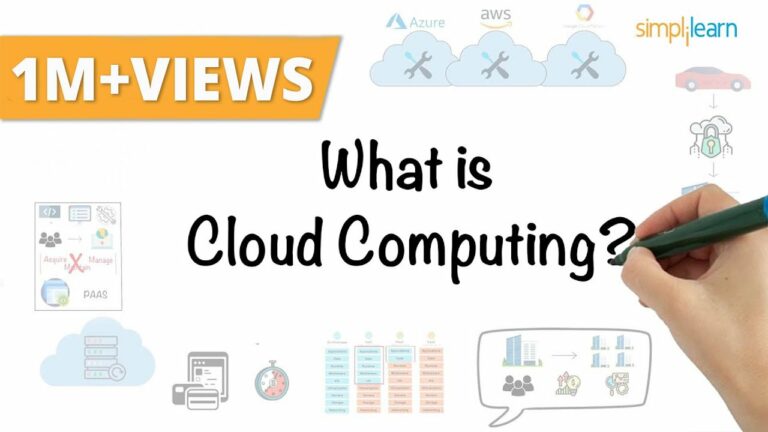In the world of modern business, cloud hosting has become a popular choice for organizations looking to streamline their IT infrastructure. However, understanding the cost associated with this technology can be a complex task. This article provides a comprehensive guide on how to estimate the price of cloud hosting, allowing businesses to make informed decisions when it comes to their IT budget. By breaking down key factors such as storage, bandwidth, and support, this article equips readers with the knowledge and tools necessary to accurately assess the financial implications of cloud hosting. Whether you are a small startup or a large enterprise, mastering the art of estimating cloud hosting prices is essential for success in today’s digital landscape.
Understanding Cloud Hosting
What is cloud hosting?
Cloud hosting is a type of web hosting service where websites and applications are stored on virtual servers that utilize resources from a network of physical servers. Instead of relying on a single physical server, cloud hosting distributes resources and data across multiple servers, making it more scalable and reliable.
Advantages of Cloud Hosting
Cloud hosting offers several advantages over traditional hosting solutions. Firstly, it provides great scalability, allowing businesses to easily increase or decrease their resource allocation based on their needs. This flexibility ensures that businesses only pay for the resources they actually use.
Secondly, cloud hosting offers high levels of reliability and uptime. Since multiple servers are involved, if one server fails, another will take over, ensuring that websites and applications remain online and accessible.
Additionally, cloud hosting often includes built-in redundancy and data backup features, minimizing the risk of data loss. This can be crucial for businesses that handle critical data or customer information.
Different types of cloud hosting services
There are several different types of cloud hosting services available. The most common ones include:
- Public cloud hosting: In this type of hosting, the infrastructure is owned and managed by a third-party provider. Resources on the public cloud are shared among multiple customers, resulting in cost savings. It is suitable for small and medium-sized businesses that require cost-efficient hosting solutions.
- Private cloud hosting: With private cloud hosting, the infrastructure is dedicated solely to a single business or organization. This type of hosting offers greater control over resources and enhanced security, making it suitable for businesses with specific compliance requirements or high-security needs.
- Hybrid cloud hosting: Hybrid cloud hosting combines elements of both public and private cloud hosting. It allows businesses to leverage the benefits of both types while maintaining security and control over their sensitive data. This type of hosting is suitable for businesses with fluctuating resource requirements or specific data segregation needs.
Factors Influencing Cloud Hosting Pricing
Resource requirements
One of the main factors influencing cloud hosting pricing is the resource requirements of a particular website or application. This includes factors such as CPU, storage, memory, and bandwidth. The more resources required, the higher the cost of hosting.
Provider costs
The costs incurred by the cloud hosting provider in terms of infrastructure, operational expenses, research and development, and profit margins also play a significant role in determining the pricing of cloud hosting services. Providers with higher costs may charge more for their services.
Geographical location
Geographical location plays a role in pricing due to variations in costs related to data center operations, energy, and labor. Hosting services in regions with higher costs of living or more stringent regulations may be priced higher compared to regions with lower costs.
Data transfer
Data transfer refers to the amount of data transferred between the cloud hosting provider and the end-users. The pricing structure for data transfer varies across providers and can depend on factors such as inbound data transfer, outbound data transfer, and transfer within the cloud. Higher data transfer requirements may result in higher pricing.
Additional features and support
Additional features and support provided by the cloud hosting provider can impact the overall pricing of the service. Managed services, technical support, backup and disaster recovery, and scalability options may come at an additional cost. The level of support and extent of features required will affect the final pricing.
Contract length
The length of the contract or billing cycle chosen by the customer can also impact the pricing of cloud hosting. Providers may offer discounts or lower pricing for longer-term commitments, such as multi-year contracts. Shorter-term commitments, such as monthly plans, may offer more flexibility but could be priced higher.
Calculating Resource Requirements
Compute resources
Compute resources refer to the processing power and CPU capability required to run a website or application. This includes the number of cores and clock speed needed to handle the expected workload. Estimating the required computing resources is crucial in determining the appropriate pricing plan.
Storage requirements
Storage requirements refer to the amount of disk space needed to store website files, databases, and any other data. The type and quantity of data being stored will determine the necessary storage space. Websites or applications with large amounts of media files or databases will require more storage.
Memory and RAM needs
Memory and RAM are essential for the smooth functioning of websites and applications. The amount of memory required depends on the complexity and scale of the website or application. Higher memory requirements, especially for resource-intensive applications or databases, may impact the pricing of cloud hosting.
Bandwidth and data transfer
Bandwidth refers to the amount of data that can be transferred between the website or application and end-users. It determines the speed and capacity at which data can be accessed. Websites or applications with high traffic volume or data-intensive functions will require higher bandwidth allocation, which can affect pricing.
Understanding Provider Costs
Infrastructure costs
Infrastructure costs include expenses related to the physical servers, networking equipment, data centers, and other hardware required to provide cloud hosting services. These costs are incurred by the hosting provider and are factored into the pricing of their services.
Operational costs
Operational costs encompass various expenses incurred by the hosting provider to ensure the smooth operation and maintenance of their infrastructure. This includes costs related to system administration, security measures, monitoring, upgrades, and ongoing support. These costs contribute to the overall pricing of cloud hosting.
Profit margin
Like any business, cloud hosting providers aim to generate a profit. The profit margin represents the difference between the cost of providing the service and the actual price charged to customers. The profit margin is an essential aspect of pricing and varies between providers.
Research and development
Investing in research and development is crucial for cloud hosting providers to stay competitive and offer innovative solutions. The expenses associated with research and development, including developing new features, enhancing security, and improving performance, are factored into the pricing of cloud hosting services.
Impacts of Geographical Location
Regional availability
The availability of cloud hosting services varies across different regions. Providers may have a presence in some regions and not in others, impacting the pricing options available. Some regions may have a more competitive marketplace, and therefore, lower prices.
Datacenter costs
The costs associated with operating and maintaining data centers can vary depending on the geographical location. Factors such as real estate prices, taxes, energy costs, and labor costs can affect data center expenses, which can, in turn, impact the pricing of cloud hosting.
Network Infrastructure
The quality and reliability of the network infrastructure in a particular region can influence cloud hosting pricing. Regions with well-established and high-speed network connections may have lower hosting costs, while regions with limited network infrastructure may have higher prices.
Data privacy regulations
Data privacy regulations can vary between regions and jurisdictions. To comply with these regulations, cloud hosting providers may need to invest in additional security measures or certifications, which can impact their costs and pricing. Regions with more stringent data privacy regulations may result in higher hosting prices.
Examining Data Transfer Costs
Inbound data transfer
Inbound data transfer refers to the data sent to the cloud hosting provider. Some providers charge for inbound data transfer, while others may offer it for free. The amount of inbound data transfer can impact the overall pricing, especially for websites or applications that receive a substantial amount of data.
Outbound data transfer
Outbound data transfer refers to the data sent from the cloud hosting provider to the end-users. This includes accessing website content or downloading files. Some providers have specific pricing structures based on outbound data transfer volume. Websites or applications with heavy outbound data transfer may face higher costs.
Data transfer within the cloud
Data transfer within the cloud refers to the transfer of data between different services or resources within the cloud environment. This could include communication between servers or accessing different components of an application. Some providers offer free or reduced-cost data transfer within their cloud, while others may charge for it.
Data transfer between cloud providers
Transferring data between different cloud hosting providers can incur additional costs. Moving data from one provider to another can involve network transfer fees, which can impact the overall pricing. This should be considered when choosing cloud hosting providers, especially if there is a need for potential migration in the future.
Considering Additional Features and Support
Managed services
Managed services refer to additional services provided by the cloud hosting provider, such as server management, security monitoring, updates, and backups. These services often come at an additional cost. The level of managed services required or desired by a business will influence the pricing of cloud hosting.
Technical support
Technical support is an essential aspect of cloud hosting, as businesses often need assistance with server configurations, troubleshooting, or performance optimization. Providers may offer different levels of technical support, with higher levels usually costing more. The extent of technical support needed will affect the overall pricing.
Backup and disaster recovery
Backup and disaster recovery solutions are critical for protecting data and minimizing downtime. Cloud hosting providers may offer various backup options, including frequency of backups, retention periods, and disaster recovery plans. The level of backup and disaster recovery required will impact the pricing.
Scalability options
Scalability options allow businesses to easily adjust their resource allocation as their needs change. Some providers offer automatic scaling solutions, while others require manual adjustments. The type and level of scalability options required will affect the pricing of cloud hosting plans.
Evaluating Contract Length Options
Monthly plans
Monthly plans offer businesses the flexibility to pay on a month-to-month basis without any long-term commitments. This option allows for easier budgeting and scalability. However, monthly plans may be priced higher compared to longer-term commitments due to the increased risk and administrative overhead for the provider.
Annual plans
Annual plans provide businesses with a longer-term commitment in exchange for potential cost savings. Providers often offer discounts or reduced pricing for customers who commit to a one-year contract. Annual plans are suitable for businesses with predictable resource requirements and a desire for more stable pricing.
Multi-year contracts
Multi-year contracts offer even greater cost savings compared to annual plans. By committing to a multi-year contract, businesses can secure lower pricing for an extended period. This option is suitable for businesses with long-term stability and predictable resource needs.
Long-term commitments
Long-term commitments refer to contracts beyond the standard multi-year options. These contracts are typically custom-tailored to meet the specific needs of the business. Long-term commitments may yield substantial cost savings, but they require careful evaluation and negotiation to ensure alignment with business goals.
Researching Cloud Hosting Providers
Comparing providers
Before choosing a cloud hosting provider, it is essential to compare different providers based on their pricing, features, reputation, and customer reviews. Evaluating their reliability, performance, and customer satisfaction will help in selecting the most suitable provider.
Reading reviews and testimonials
Reading reviews and testimonials from other customers can provide valuable insights into the quality of service and support offered by a cloud hosting provider. It is important to consider both positive and negative feedback to make an informed decision.
Requesting quotes
Requesting quotes from multiple cloud hosting providers will help in understanding the pricing options available and facilitate comparison. By providing detailed information about resource requirements, businesses can receive accurate quotes that align with their needs and budget.
Negotiating pricing
Negotiating pricing with cloud hosting providers can be an effective way to achieve cost savings. Depending on the size of the business and the level of resources required, providers may be open to negotiations and offer custom pricing plans. It is worth exploring this option to optimize costs.
Cost Optimization Strategies
Right-sizing resources
Right-sizing resources involve accurately assessing the required computing, storage, memory, and bandwidth needs. By avoiding overprovisioning resources, businesses can ensure they are not paying for unused capacity. Regular monitoring and adjustments to resource allocation can lead to cost optimization.
Utilizing reserved instances
Reserved instances allow businesses to commit to using specific computing resources for a predetermined term. By reserving resources in advance, providers often offer discounted pricing. Utilizing reserved instances can result in significant cost savings for businesses with stable resource requirements.
Leveraging spot instances
Spot instances are spare cloud computing resources offered at significantly discounted prices. Businesses can bid for spot instances, and if their bid is successful, they can access these resources for a specified duration. Leveraging spot instances can be a cost-effective strategy, particularly for non-critical workloads with flexible timing.
Implementing cost monitoring and alerts
Implementing cost monitoring and alerts enables businesses to track their cloud hosting expenses in real-time. By setting up cost alerts and regularly reviewing usage patterns, businesses can identify areas where cost optimization is possible. This proactive approach allows for better management and control of cloud hosting costs.
In conclusion, estimating the price of cloud hosting involves considering various factors such as resource requirements, provider costs, geographical location, data transfer, additional features, support, and contract length. By understanding these factors and implementing cost optimization strategies, businesses can make informed decisions and optimize their cloud hosting expenses.








